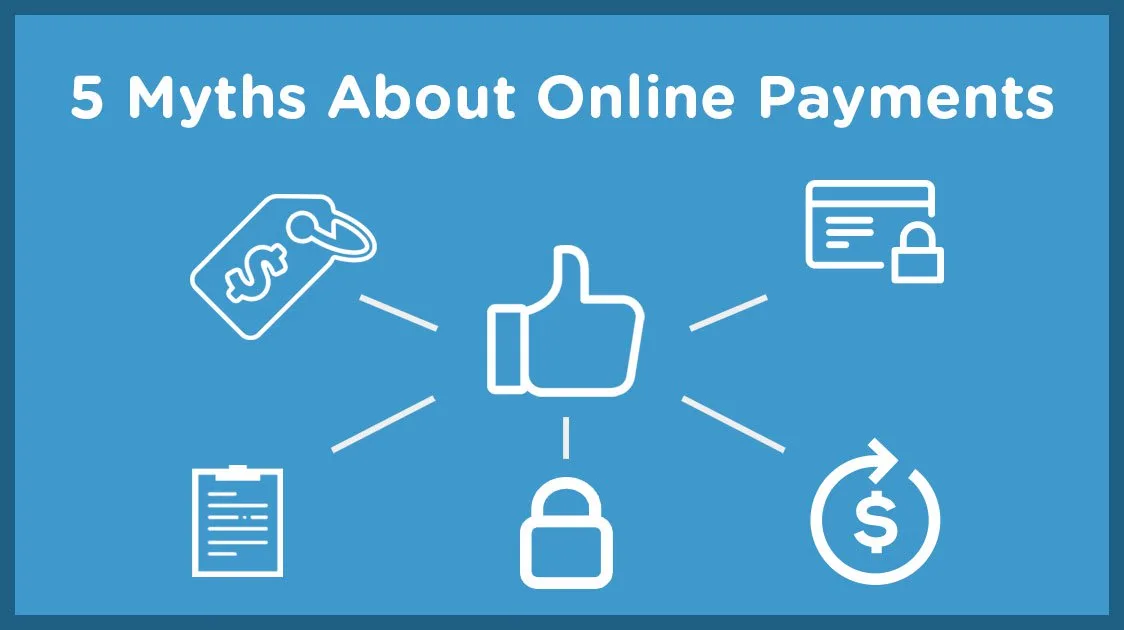
The days of paying by cash and check are in the past. More sports organizations are starting to utilize online payments for tryouts, team dues, and uniform purchases. This allows parents to register players on their computer or phone from the comfort of their living room, and it can make the process less complicated for your organization.
There are a number of myths revolving around online payments, which can create a psychological barrier for those looking to change their collection methods. Don’t believe them! This blog will help put your mind at ease by dispelling five common myths about online payments.
Myth #1. Private Information Isn’t Secure
When it comes to making credit card payments online, the primary concern many people have is whether or not their personal information is secure. To the same point, this is also the primary area of focus for payment processors. Without going too far into the technical mumbo jumbo associated with internet security, there are a number of measures in place to make sure your credit card and personal information are kept secure and private.
For example, SSL (Security Socket Layer) is used to create an encrypted link between your computer and the network server you’re on. Also, a token system provides an added layer of security by preventing others from hacking your online session. If you don’t have a token, you can’t get on the ride!
It's critical your website have an SSL certificate for search engines and for collecting credit card payments online. SSL certificates used to be relatively expensive and complicated, but many website builders now include SSL certificates so you don't have to worry about paying separately each year.

Google Chrome, Safari, Firefox, and Microsoft Edge will all show you if your website is secure to accept payments and personal info. Learn more about Why Google Forces You to Get an SSL Certificate.
With new developments in technology, online payments are arguably becoming safer than offline. In fact, cash and paper checks can make you 125 times more susceptible to having your money and/or identity stolen.
Myth #2. You Can’t Collect Registration Information
I remember going to city hall when I was a kid to sign-up for little league. We filled out a registration form on pen and paper, and handed a check over to the board members. Some youth sports organizations still operate this way because administrators believe this is the only way to collect information, get forms signed, and receive payments all at the same time.
BUT REQUIRING IN-PERSON REGISTRATION IS A THING OF THE PAST!
Now, online registration forms can be built into online payment processing systems. Parents can complete the process all at once from anywhere, on any device. Board members obtain all of the information they need, and payments via direct deposit.
Also, because it is paperless, the info can be neatly exported into a spreadsheet for team assignments or coach distribution lists. No more Saturdays lost to city hall!
Need to set up your online registration form for next year? Follow the tips in this video to create a simple form to collect player information in one minute or less!
Myth #3. Parents Prefer To Pay With Other Methods
It is easy to mistake “we have always done it this way” for “the parents prefer to do it this way.” Survey your parents about payment methods, and you may receive a different answer than you were expecting.
While cash and check were once popular forms of payment, only 9% of people prefer to use cash or check nowadays; whereas, 91% prefer debit or credit card. Here are some reasons why online payments with cards are on the rise:
– Rewards: Whether it’s cash back, miles, or prizes, you are constantly earning something when you make credit card payments.
– High Price Points: Team dues aren’t cheap, and card payments provide an added sense of comfort with tracking and fraud protection. Also, more rewards!
– Changing Parent Demographics: The next generation of parents are coming, and they are more tech savvy than ever. A recent survey shows 83% of millennials use credit cards to fund their lifestyle.
Parents want registration to be easy. Using online registration and payment can be a great way to increase participation next season.

Source: Forbes
Myth #4. Transaction Fees Take Your Money
Yes, transaction fees exist for online payments. Do they have to affect your sports organization’s operating budget? Absolutely not. Instead of the organization absorbing the entire hit, the processing fees can be shared amongst the registrants.
Do you usually charge $60 for registration in order to cover costs? All you would have to do is charge a few dollars higher this year for your season. I’d like to think parents will chip in a couple of extra dollars for the “greater good” of the organization, especially if it allows for a more streamlined process for everyone involved.
Myth #5. Refunding Payments Is More Difficult
Refunds happen in youth sports. Parents move right before the season, players get injured, or injuries take place at the beginning of the season.
What happens when someone registers with cash or check, but then asks for a refund? If you’re lucky, you can void the check or return the cash before it has been deposited into your bank account. If you’re not so lucky, you’ll be making another trip to the bank and tracking the parent down to return it.
Online payments are much quicker and easier to refund and require no in-person interaction. A parent can send an email request, explain the situation, and get a refund a in a few minutes.

Online payments can be refunded at the click of a button, and the money will be directly deposited back into the registrant’s bank account. It’s that easy!